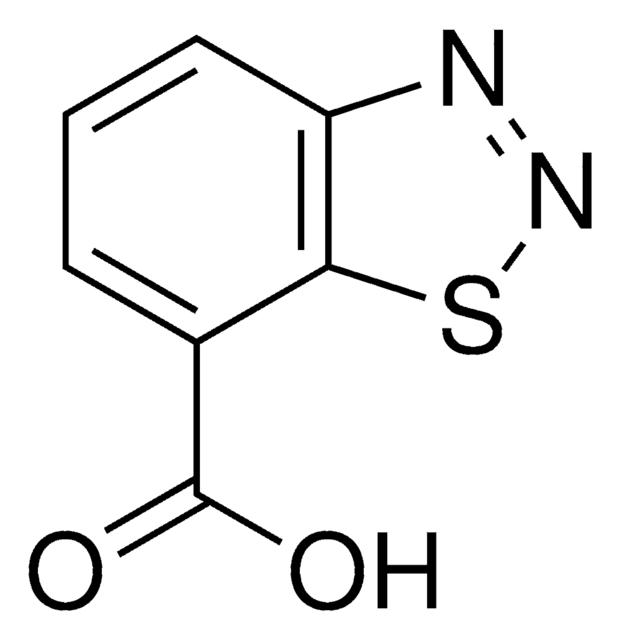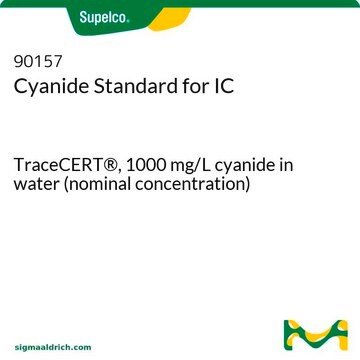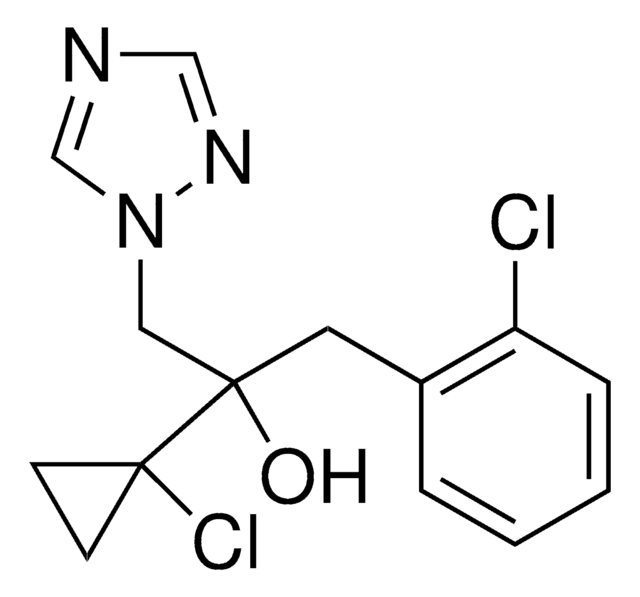45391
4-Chlorophenoxyacetic acid
PESTANAL®, analytical standard
Synonym(s):
4-CPA
Sign Into View Organizational & Contract Pricing
All Photos(1)
About This Item
Empirical Formula (Hill Notation):
C8H7ClO3
CAS Number:
Molecular Weight:
186.59
Beilstein:
1211804
EC Number:
MDL number:
UNSPSC Code:
41116107
PubChem Substance ID:
NACRES:
NA.24
Recommended Products
grade
analytical standard
Quality Level
product line
PESTANAL®
shelf life
limited shelf life, expiry date on the label
technique(s)
HPLC: suitable
gas chromatography (GC): suitable
application(s)
agriculture
environmental
format
neat
SMILES string
OC(=O)COc1ccc(Cl)cc1
InChI
1S/C8H7ClO3/c9-6-1-3-7(4-2-6)12-5-8(10)11/h1-4H,5H2,(H,10,11)
InChI key
SODPIMGUZLOIPE-UHFFFAOYSA-N
Looking for similar products? Visit Product Comparison Guide
Application
Refer to the product′s Certificate of Analysis for more information on a suitable instrument technique. Contact Technical Service for further support.
Recommended products
Find a digital Reference Material for this product available on our online platform ChemisTwin® for NMR. You can use this digital equivalent on ChemisTwin® for your sample identity confirmation and compound quantification (with digital external standard). An NMR spectrum of this substance can be viewed and an online comparison against your sample can be performed with a few mouseclicks. Learn more here and start your free trial.
Legal Information
PESTANAL is a registered trademark of Merck KGaA, Darmstadt, Germany
Signal Word
Warning
Hazard Statements
Precautionary Statements
Hazard Classifications
Acute Tox. 4 Oral
Storage Class Code
11 - Combustible Solids
WGK
WGK 1
Flash Point(F)
Not applicable
Flash Point(C)
Not applicable
Personal Protective Equipment
dust mask type N95 (US), Eyeshields, Gloves
Choose from one of the most recent versions:
Already Own This Product?
Find documentation for the products that you have recently purchased in the Document Library.
B Lundgren et al.
Biochemical pharmacology, 36(6), 815-821 (1987-03-15)
The effects of dietary exposure to 0.125% (w/w) p-chlorophenoxyacetic acid, 2,4-dichlorophenoxyacetic acid or 2,4,5-trichlorophenoxyacetic acid on the content of peroxisomes and levels of certain xenobiotic-metabolizing enzymes in mouse liver have been investigated. In agreement with the literature on rat liver
Oscar Moran et al.
Biochemistry, 42(18), 5176-5185 (2003-05-07)
Molecular simulation techniques were applied to predict the interaction of the CLC-0 Cl(-) channel and the channel-blocking molecule p-chlorophenoxyacetic acid (CPA). A three-dimensional model of the CLC-0 channel was constructed on the basis of the homology with the bacterial Cl(-)
Alessio Accardi et al.
The Journal of general physiology, 122(3), 277-293 (2003-08-13)
The Torpedo Cl- channel, CLC-0, is inhibited by clofibric acid derivatives from the intracellular side. We used the slow gate-deficient mutant CLC-0C212S to investigate the mechanism of block by the clofibric acid-derivative p-chlorophenoxy-acetic acid (CPA). CPA blocks open channels with
Ediz Yeşilkaya et al.
Hormone research, 72(4), 225-235 (2009-09-30)
Plant growth regulators are considered to leave minimal amounts of remnants and therefore cause no significant side effects in humans. In this study, we aimed to investigate the hormonal and histopathological effects of 4-chlorophenoxy acetic acid (4-CPA), a commonly used
Ting-Fu Jiang et al.
Analytical sciences : the international journal of the Japan Society for Analytical Chemistry, 22(6), 811-814 (2006-06-15)
A new, simple and rapid capillary electrophoresis (CE) method, using hexadimethrine bromide (HDB) as electroosmotic flow (EOF) modifier, was developed for the identification and quantitative determination of four plant hormones, including gibberellin A3 (GA3), indole-3-acetic acid (IAA), alpha-naphthaleneacetic acid (NAA)
Our team of scientists has experience in all areas of research including Life Science, Material Science, Chemical Synthesis, Chromatography, Analytical and many others.
Contact Technical Service








